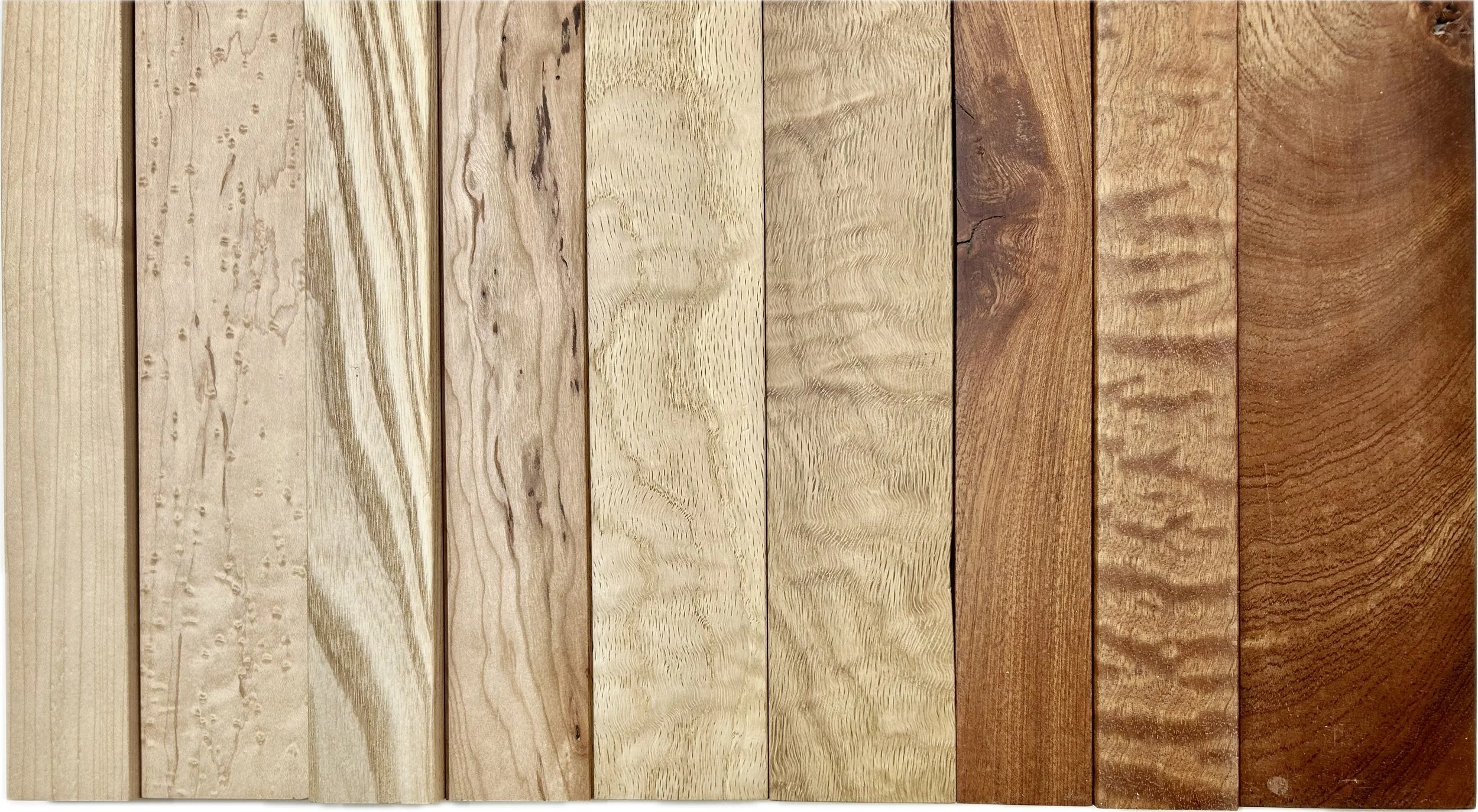The Beauty of Wood: Grain, Character & Craft
An image of raw natural walnut wood
At Frame London, we work with a carefully selected range of timbers — including maple, walnut, oak, ash, sapele, and tulipwood. Each wood brings its own unique characteristics, and we choose them not just for their beauty, but for their strength, stability, and suitability for bespoke framing.
Among them, oak, walnut, ash, and maple are all hardwoods, prized for their durability and distinctive grain patterns. These woods lend themselves particularly well to fine custom work, where the visual and structural qualities of the frame are equally important.
Understanding Grain: More Than Just Appearance
One of the most fascinating aspects of working with natural timber is the variation in grain, even within the same species. This variation isn’t random — it’s influenced by both the way the tree grew and how the wood is cut.
Most framing timber is plain-sawn, also known as flat-sawn or rift-sawn. These cutting methods affect not only the grain pattern but also how the wood behaves over time.
If you look at the end grain of a piece of wood, you'll see curved lines — these are growth rings, with the lighter bands formed during rapid growth in spring, and the darker, denser rings forming later in the growing season, during summer and autumn. These rings are a literal record of the tree’s life, and they create the beautiful, organic patterns we call grain.
No Two Frames the Same
While each wood type has recognisable traits, the natural grain is never identical — every length of timbre and every cut, is one of a kind. That’s part of what makes bespoke framing so special: each frame becomes a unique object, shaped by both the woodworker and nature.
At Frame London, we celebrate this uniqueness. Whether it’s in the warmth of walnut or the subtle tones of ash, the grain is a part of the story of the frame itself.
An Image of wood grain types at Frame London
Wood patterns, varients, defects and figures (as shown on the image from left to right)
Straight grain on maple - rift sawn wood produces a straight and neutral even grain
Birds eye grain on maple - formed by failed buds at the cambium layer under unknown stress
Cathedral grain on ash - formed by the natural curve of growth ringsas the tree grows outward in layers
Spalted grain on cherry - spalting is a growth irregularity caused by fungi colonising the heartwood or sapwood of a weakened, dead or dying tree
Mixed figure on oak - refers to wood exhibiting overlapping grain features (eg. ray flecks and ripples)
Knot on Sapele - formed when branches grow out of the trunk but are engulfed as the tree grows
Pomelle Figure on Sapele - pomelle grain is caused by irregular fibre growth under internal stress
Rings formed around a burl on Sapele - a burl is a swirling chaotic grain that develops when a tree produces a rounded growth, usually as a result of stress or infection


